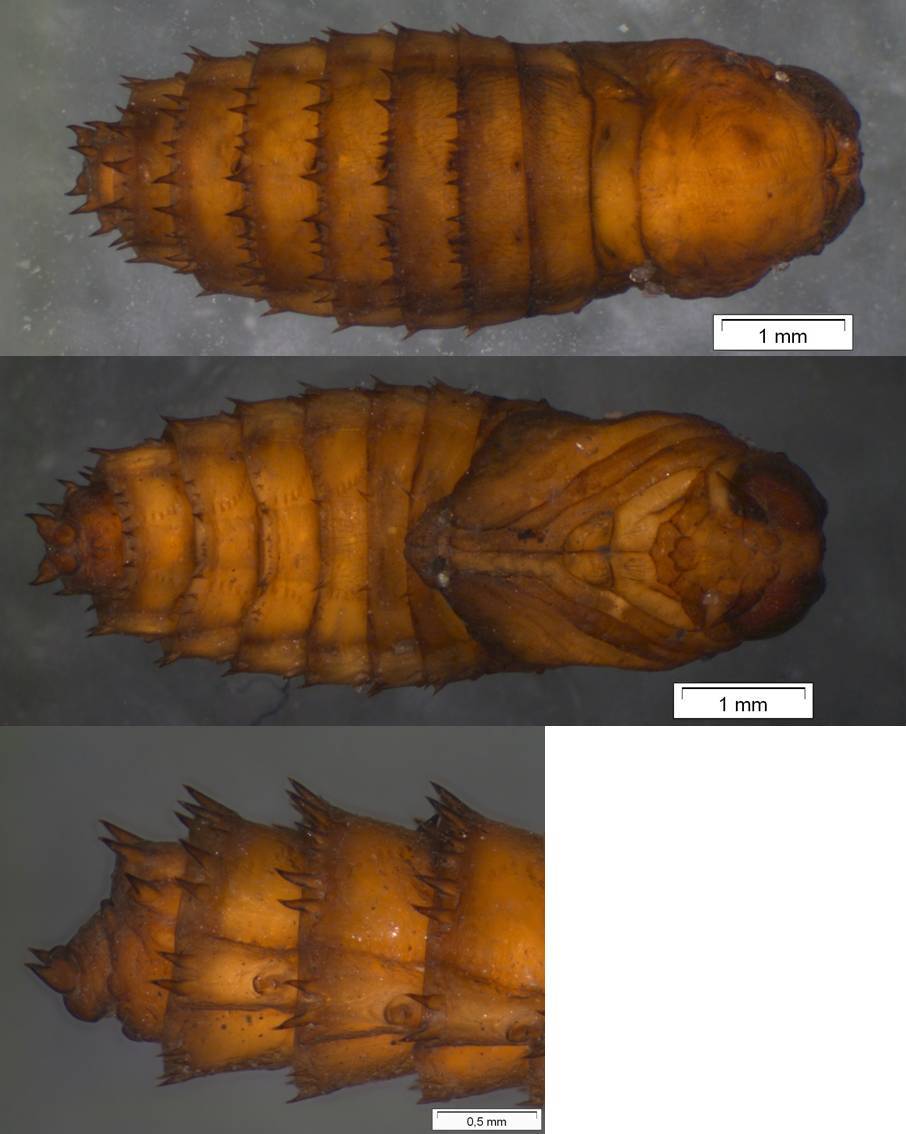Diptera.info :: Identification queries :: Diptera (eggs, larvae, pupae)
|
Rhagionidae ? pupa
|
|
| atylotus |
Posted on 25-11-2013 10:54
|
|
Member Location: Amsterdam, NL Posts: 1166 Joined: 29.05.09 |
I have found this pupa in or along the banks of a brook in the northern part of the province of Limburg, The Netherlands on 10.vi.2013. It was collected using a pondnet, so the exact place in the brook is unknown. I'm not how to name this species and I hesitate between Athericidae and Rhagionidae, but in my opinion it comes closer to a Rhagionidae. Any idea? atylotus attached the following image:  [73.96Kb] |
|
|
|
| Paul Beuk |
Posted on 25-11-2013 11:07
|
|
Super Administrator Location: Netherlands Posts: 19403 Joined: 11.05.04 |
Though you have not included a full lateral view, I think it corresponds rather well with the pupa of Rhagio scolopaceus in Die Fliegen. I assume other Rhagio will be similar.
Paul - - - - Paul Beuk on https://diptera.info |
| John Carr |
Posted on 25-11-2013 15:03
|
|
Super Administrator Location: Colorado, USA Posts: 10537 Joined: 22.10.10 |
Aquatic habitat favors Athericidae. The only key to fly pupae I have covers aquatic families only and does not include Rhagionidae. http://books.goog...;lpg=PA525 (link to older version; the latest version adds a purely New World family) |
| Ectemnius |
Posted on 27-11-2013 11:18
|
|
Member Location: The Netherlands Posts: 865 Joined: 22.11.11 |
Hello People, I think Rhagionidae. Stubbs and Falk 2001 British Soldierflies and their allies give a key to the pupae of Athericidae and Rhagionidae. Rhagionidae should have: "Segments with at least the dorsal surface displaying a better developed partial ring of bristles or spines." Athericidae on the other hand: "Abdominal segments with few isolated spines." The size points to the smaller Rhagionidae like Chrysopilus. Greetings, Ectemnius |
|
|
|
| Jump to Forum: |













